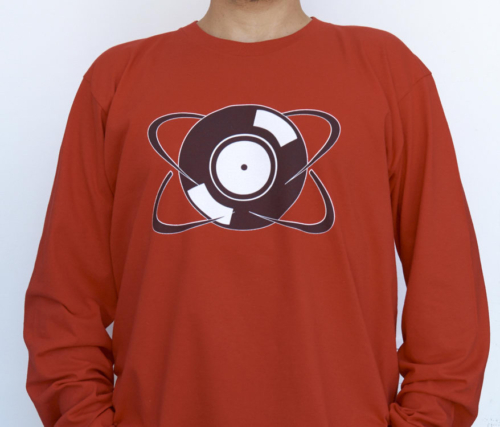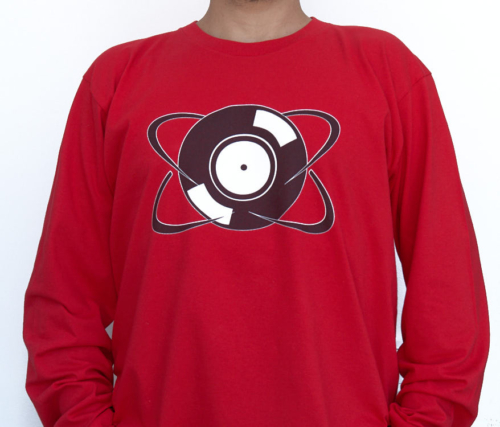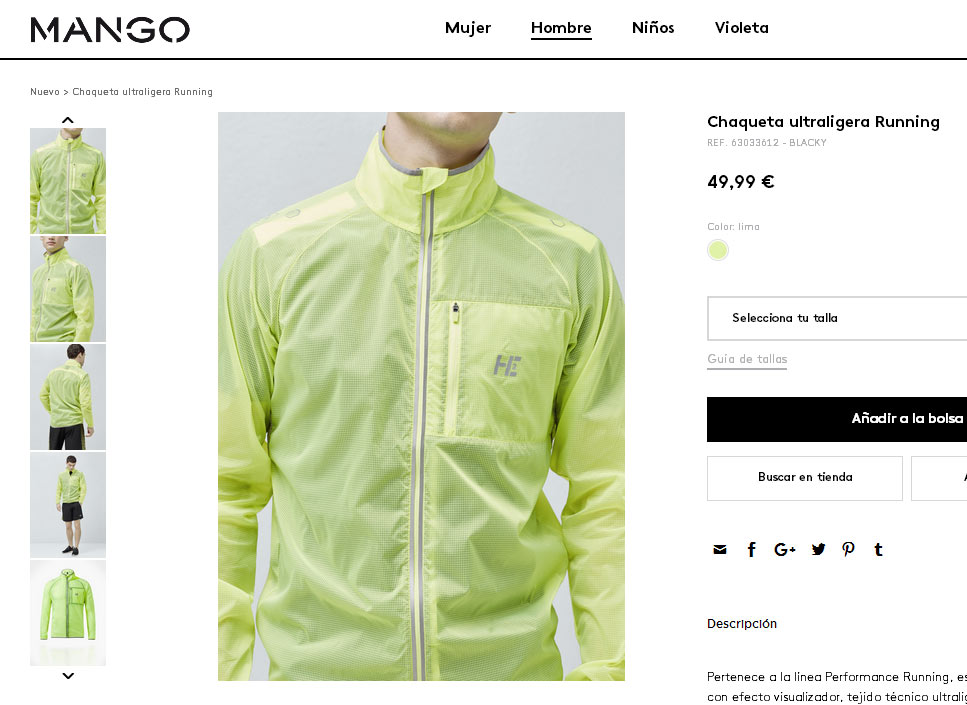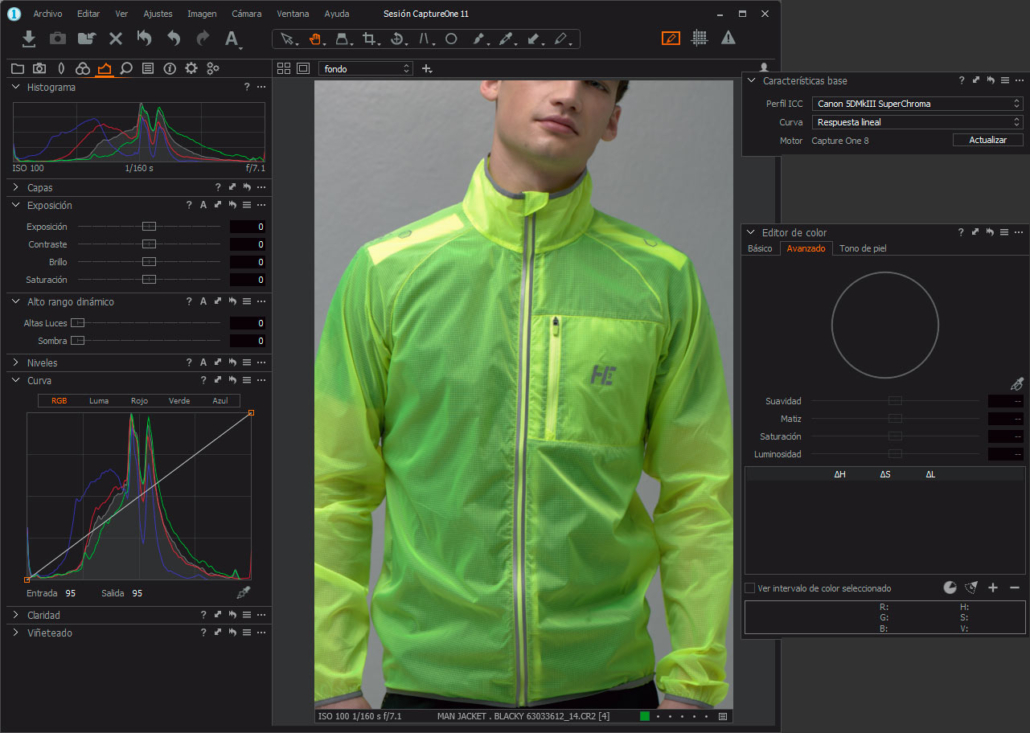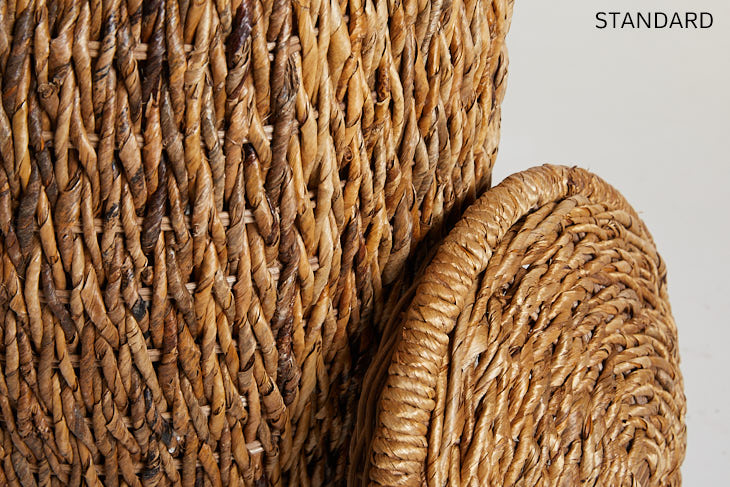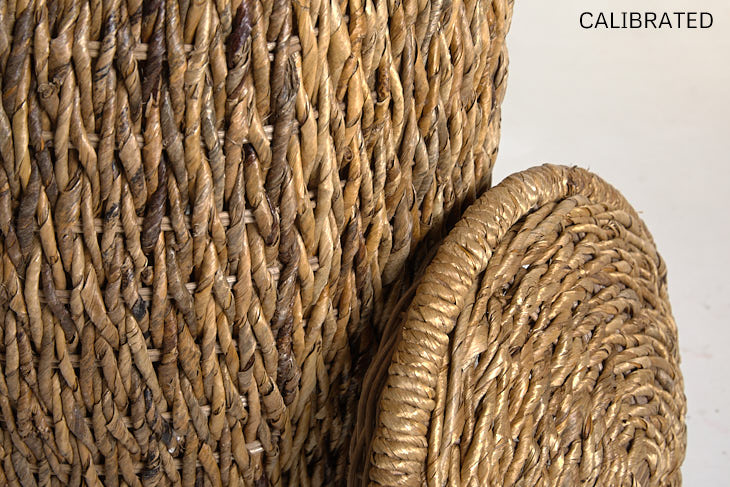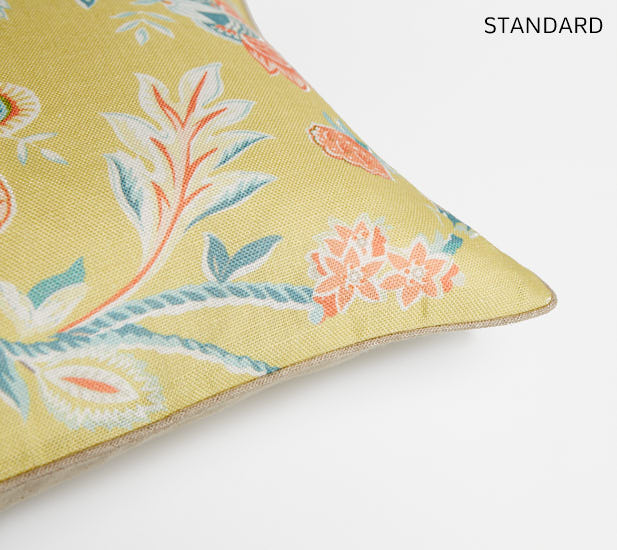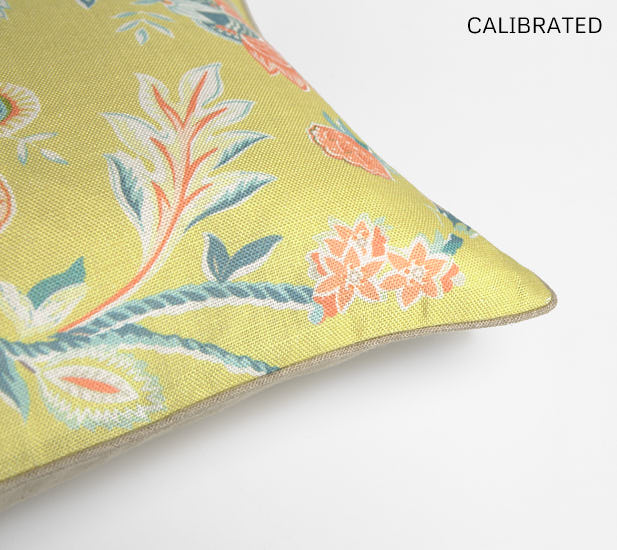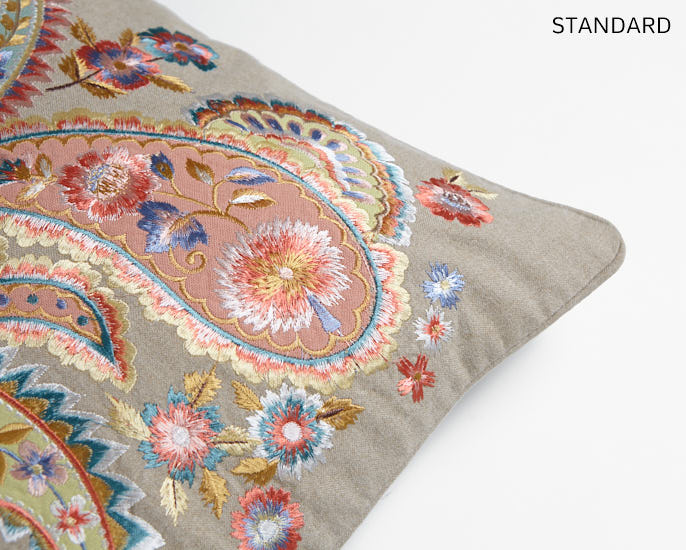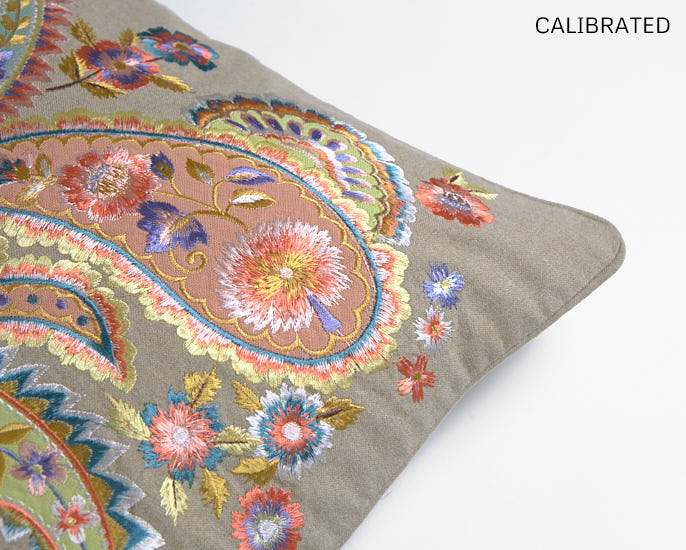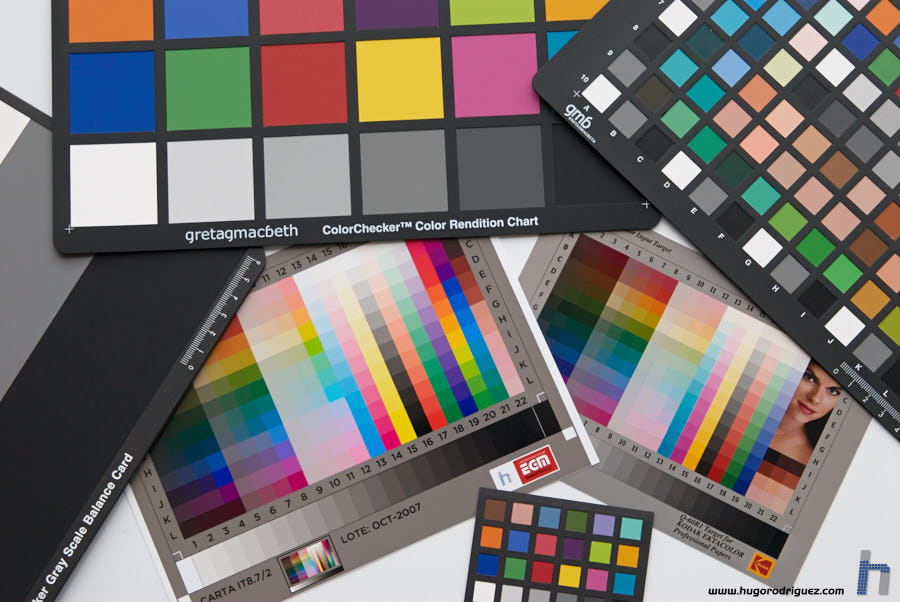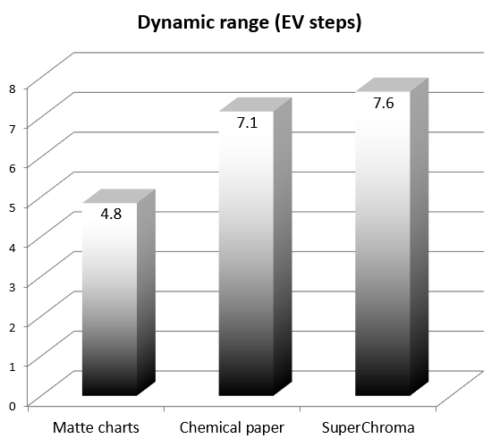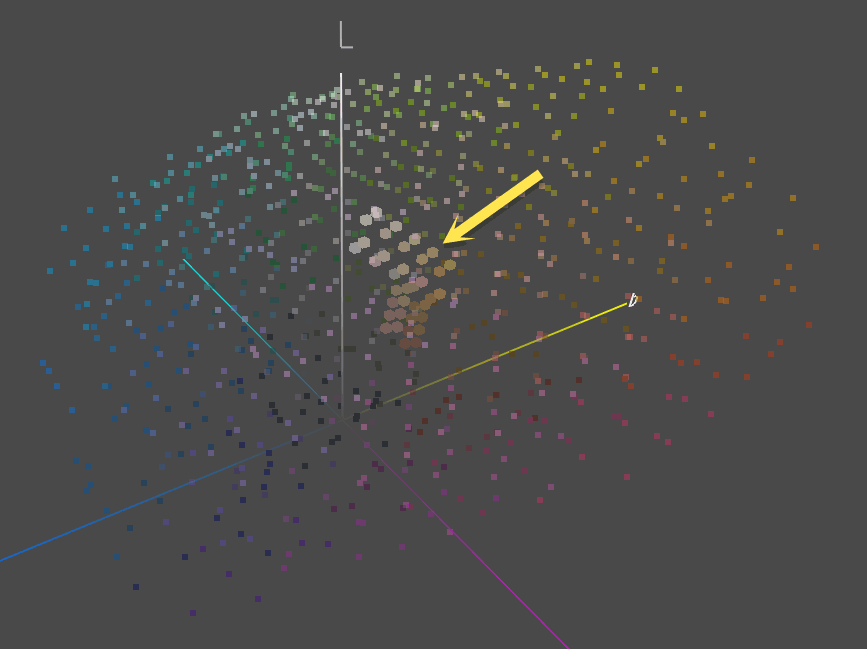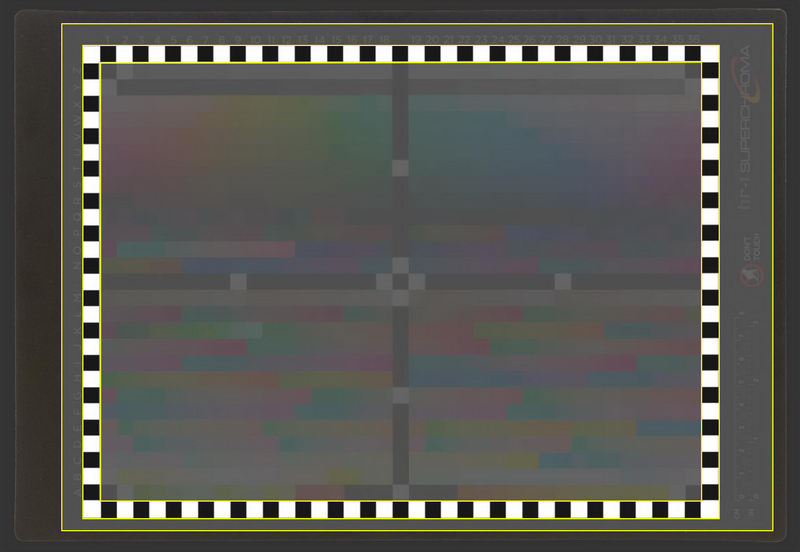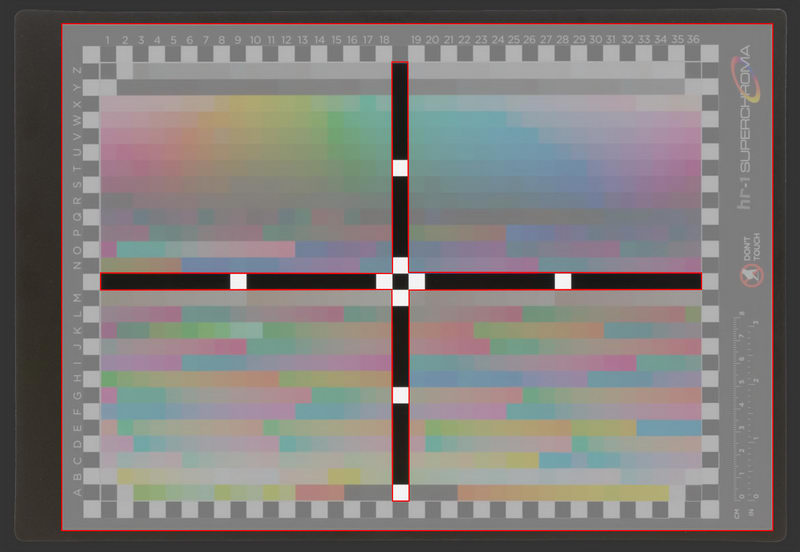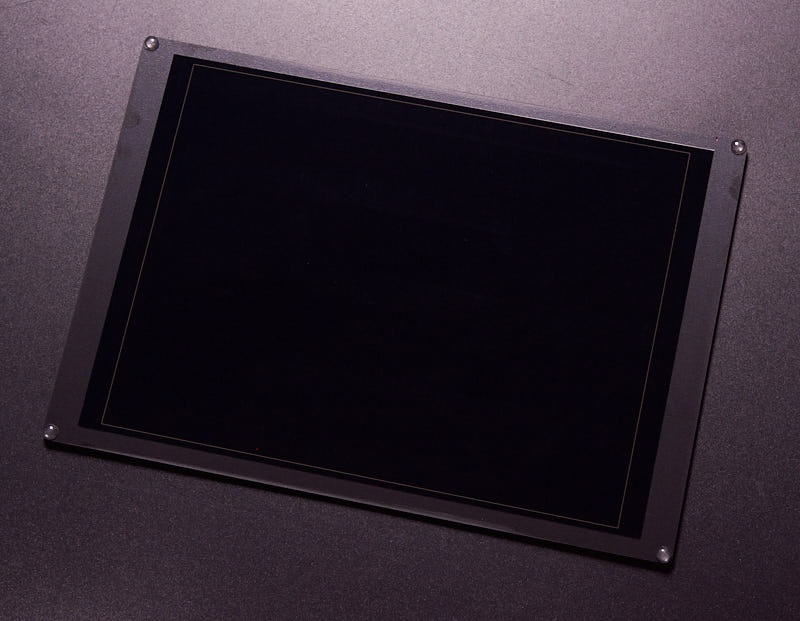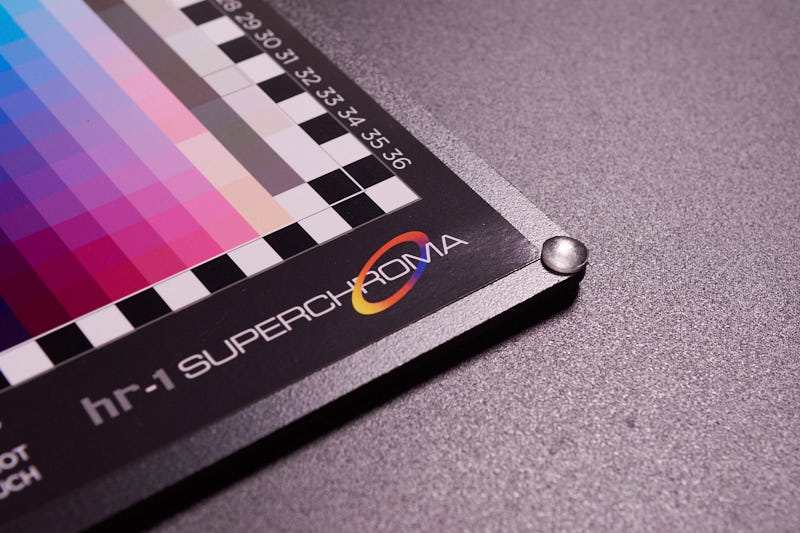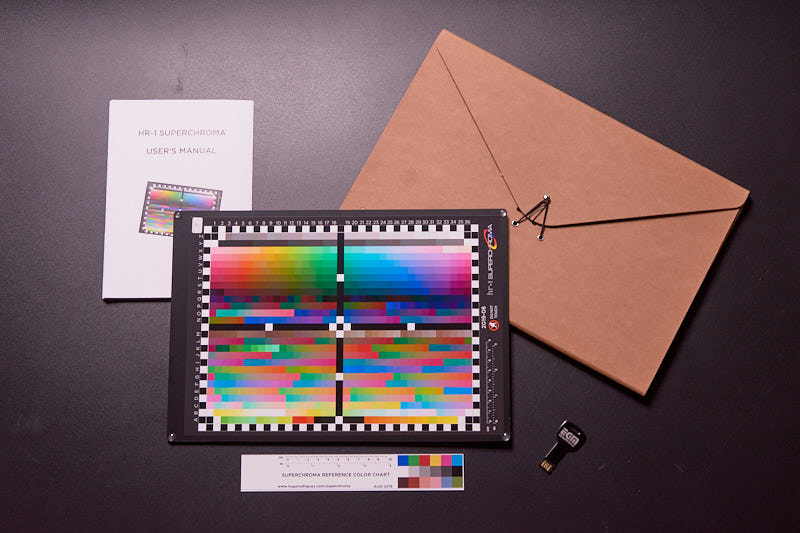HR-1 SuperChroma™
Know the new generation color chart.
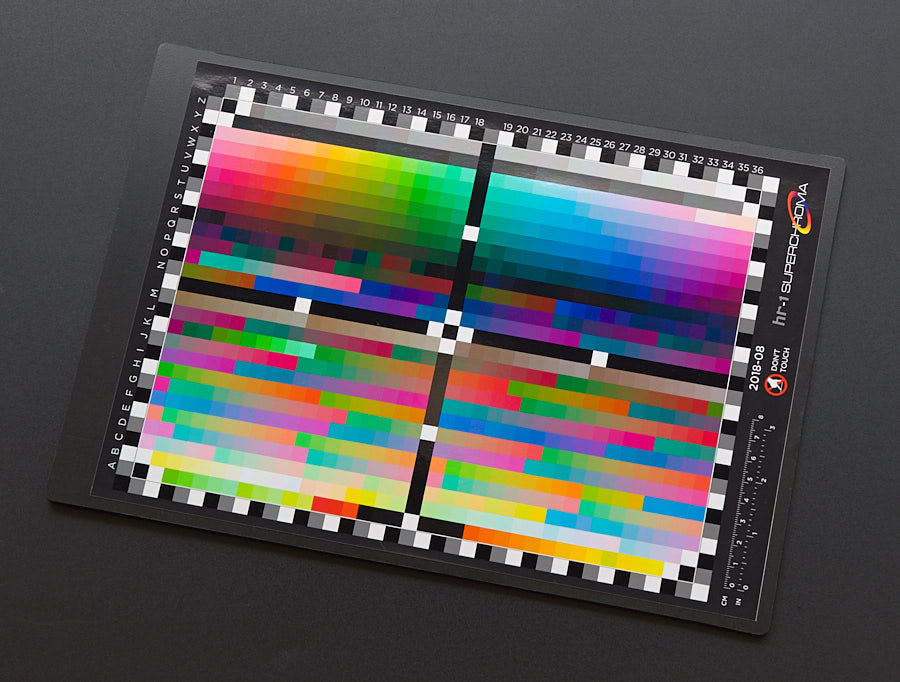
The new HR-1 SuperChroma™ is a new generation, high resolution chart that breaks with the established concepts, offers new solutions and set newer standards today for modern high level cameras and backs.
Unlike the other charts, the HR-1 has been specially designed for use with high quality digital cameras and RAW captures, using the experience learnt from producing the only IT8 Wide Gamut (page in spanish) cards since 2006, but adding a multitude of features that I had learnt over the years. The new SuperChroma brings together features seen on other charts and adds new ones to take it to a new level, the only one capable of meeting today’s toughest demands, both for reproducing artwork and for e-commerce.
[New 2019-08] HR-1 is now compatible with BasICColor and Lumariver.
[New 2021-09] HR-1 is now supported by 3DLUT Creator. Check the user manual (v1.3) to know how to use it.
You can now get your Superchroma together with BasICColor Input 6 at a special discount bundle price. Check it in the ordering page 👇🏼
Current problems
Today we deal with products of multiple colours which is very important to reproduce faithfully. For example, in the field of artwork reproduction, where the best possible fidelity is required.
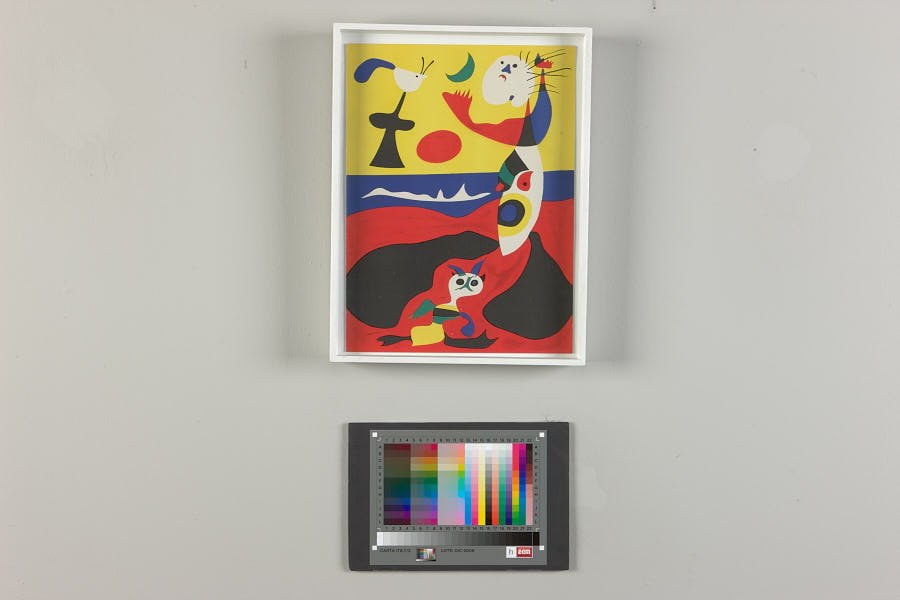
A picture by Joan Mirò (a Catalan painter), with an IT8-EGM as a reference. Photo: Marcelo Isarrualde.
There are also other areas where faithful colour is needed, such as commercial product photography or fashion. Also, in areas such as landscape or animal photography, where correct profiling guarantees the true colour of the coat or plumage (this detail allows the male to be distinguished from the female in many species of birds, for example). In biology it is used to capture the colour of tissues and in forensic photography to record the exact colour of evidence.
E-commerce
But e-commerce is perhaps the area where most demand is currently being made. Hundreds of photographers take thousands of product pictures and need to see the color faithfully once the photo is uploaded to the online store… more than anything else because the number of returns is closely linked to it.
The major clothing brands know this well: there are many returns every day because when a customer buys a red t-shirt, that’s what they expect to receive. The problem is that if what arrives in the package is orange, the customer returns the product.
It is true that the customer’s viewing factor is also involved here, but this is something that the seller cannot solve (although they can make recommendations). What they can do is to ensure that the color on their side is as true as possible.
Nature photography
There are many other areas in which a photograph with precise color is highly valued. One of them is animal photography. For example, in bird photography there is a whole community of enthusiasts and biologists who study the populations of species in each area. And for ornithologists, color is important. A photo with «impacting» colors (as it is ideal for general publication) is not useful, because they cannot really distinguish the color of the plumage. For example, with many species, a slight change of a tone is what makes it possible to differentiate the male from the female… only if the color is faithful.

Photo: Policarpo Hernandez

Photo: Policarpo Hernandez
To an inexperienced eye, calibration may appear discolored or without contrast, but to an ornithologist or a trained eye, it is the difference between the «postcard» color and the exact color of the real bird.
Unrivalled color accuracy
In a letter aimed at providing the highest precision in the world, accuracy is very important, and has been taken into account in all aspects of the design.
With the HR-1 SuperChroma, the highest guidelines of the world’s most demanding standards (FADGI and Metamorfoze) can be surpassed even with an APS-C DSLR, something -until now- reserved for high-end digital backs. This is because with the HR-1 SuperChroma and a high quality capture, we can guarantee that an average DeltaE value as low as 1.5 can be achieved in real conditions, and by evaluating the deviation with another chart (an IT8) and not with one’s own, which would give falsely good values. Guaranteed, we have achieved it on multiple occasions and in different scenarios.
Usos
Today e-commerce has become one of the most active fields in which to use a good camera profiling. The reason is simple: a good color management in the capture greatly reduces product returns.
Here is a real example of a magenta Mango jacket:
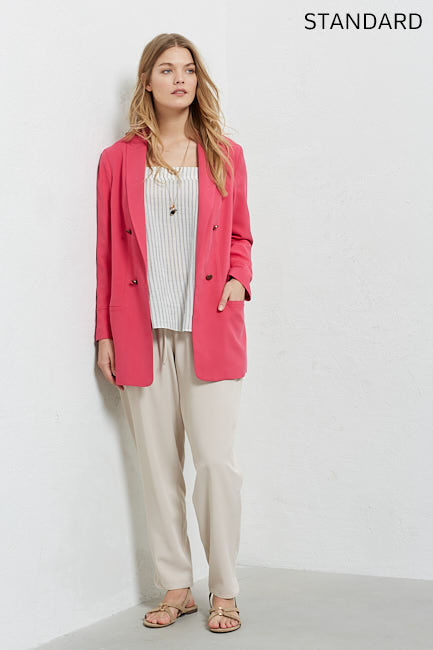
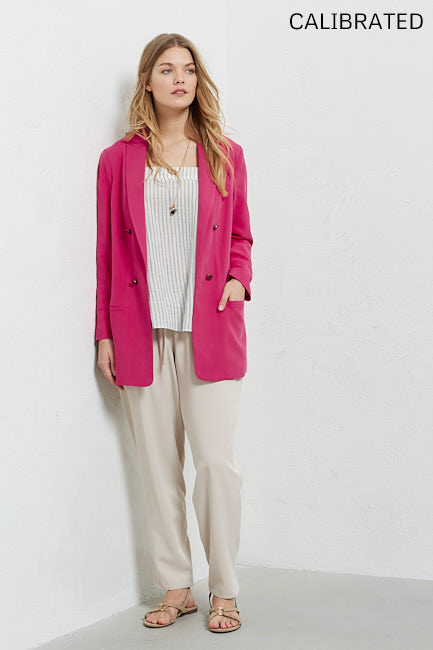
In this particular example, two develops have been made: one for the garment (the profiled one) and one for the rest (without profiling). In this way the appearance of the skin is not modified.
But the most extreme examples are the phosphor colors. Many photographers are nervous just to think that their client wants to photograph a garment in phosphor yellow, like the one shown in the MANGO online shop:
Here you can see the appearance of the RAW revealed «as-is» and with the ICC profile created from the Superchroma:
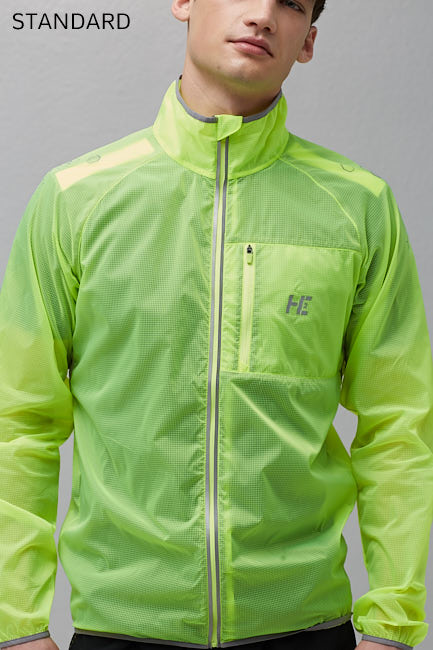
This is the original RAW developed with the generic profile, where you can see a yellow that is simply more or less intense.
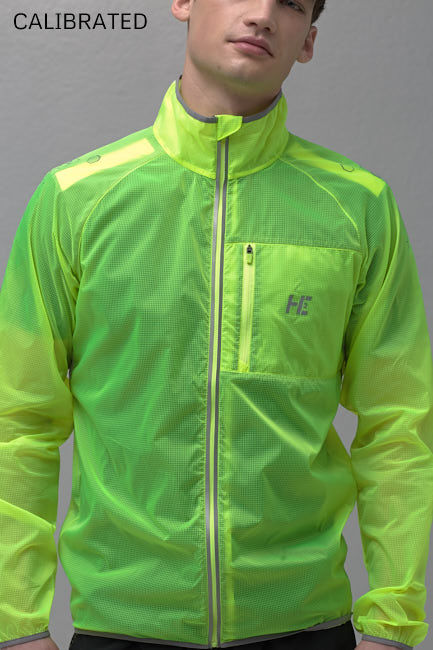
And this is the result with the calibration done with the HR-1 SuperChroma (well, really the 2nd generation prototype).
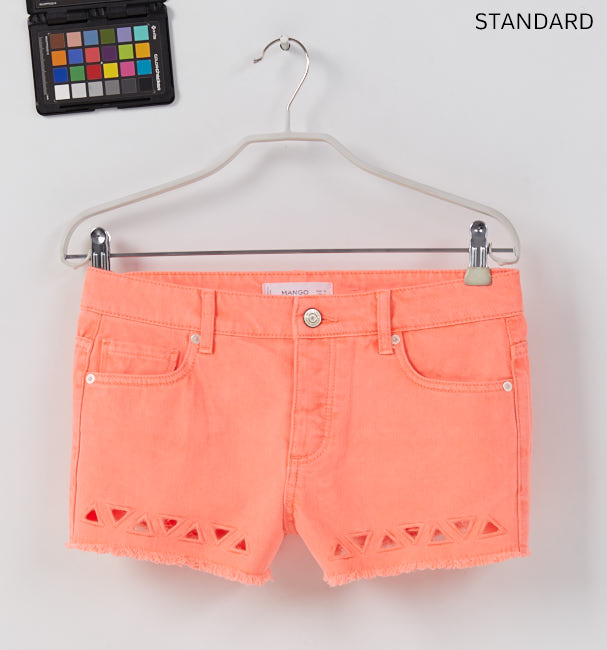
This is the original RAW developed with the generic profile, where you can see a somewhat washed magenta.
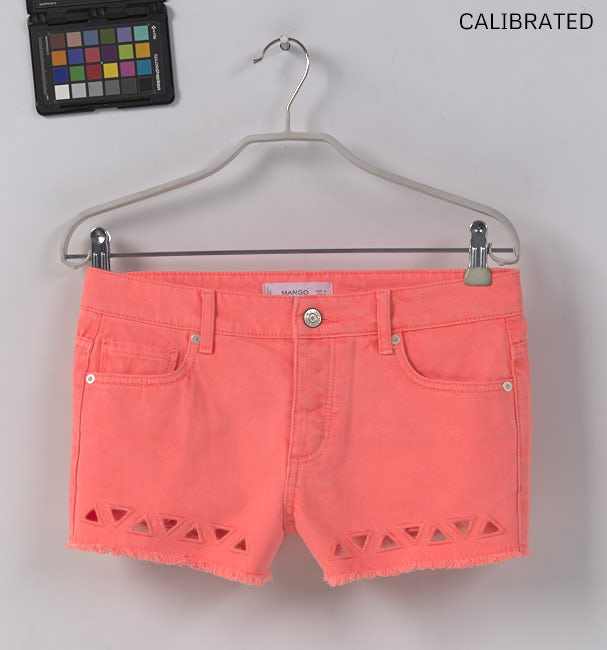
NOTE: This image has been exported in the Adobe RGB space, and it’ll only be displayed correctly on monitors with this gamut.
It should be noted that in the developing there is no adjustment of any kind, except the WB and the color profile. No styles, no color editing, no layers, no masks or anything similar.
Product Photography
Here you can see several examples of application in product (in this case ZARA HOME):
The competitors
There are currently several charts on the market that are meant to profile cameras, such as the Colorchecker, SG, the QPCard, the SpyderChecker or standard IT8 charts.
Some give better results than others, of course. But none offers a true high quality color solution, for a variety of reasons.
Some have too few color samples to profile a camera. And, no, 15 or 20 patches are not enough to accurately profile a digital camera for ALL possible colors. Let’s not forget that a good current DSLR reproduces 242 colors (4.39 trillion colors).
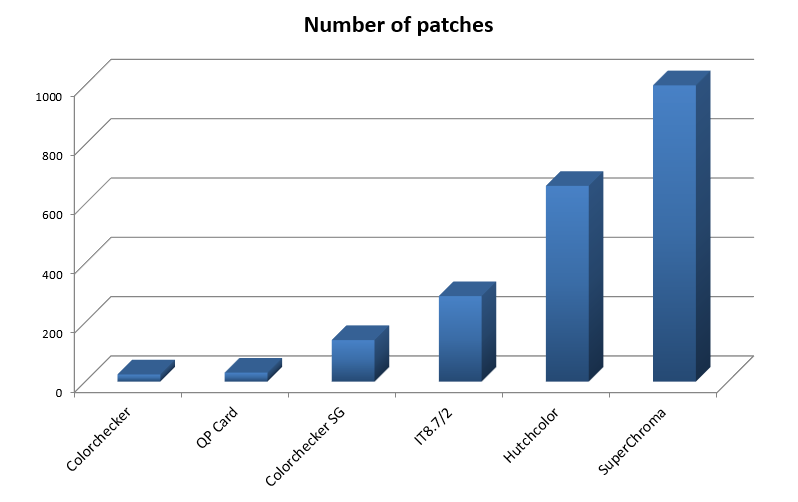
Number of patches of the different charts.
Some are matte finish, which works very well for easy capture because it avoids reflections, but then it greatly limits the dynamic range and also the color gamut.
Those that do have a sufficient number of color patches are usually made of chemical paper, limiting their color gamut substantially.
Another problem is that even the best charts are designed under the idea of gradients: scales that range from black or white to the most saturated color. This is looks very well at first glance, but on closer examination it presents problems. When the subject photographed has a color very similar to one of the primaries, everything goes well, but when the color is just halfway between two primaries, the strongest errors appear. That happens with colors like turquoise or purple. No wonder they’re reputed to be the worst colors. Not to mention the phosphor colors.
Color gamut
The HR-1 is printed in small runs using the latest generation of 12 pigmented ink plotters on professional high quality glossy paper with low optical brightener content. This allows it to have the largest color gamut available today. Not only that, but also the longer durability, which is about 60 years (compared to 22 years for a chemical copy).
The gamut is so wide that it clearly exceeds the Adobe RGB space in many colors and almost reaches the Prophoto space at some point. This allows the camera sensor to be tested, since «the bigger the ruler, the better it is measured», right?
HR-1 Superchroma vs Adobe RGB gamut.
Uniformly distributed patches.
The big difference of the HR-1 SuperChroma with the rest of the cards is not in its extraordinarily wide color gamut but in the distribution of its patches in the color space. Instead of using gradients, it distributes all its patches in a perceptually uniform way throughout the color space. In other charts, there is a high density of patches in certain areas (near black or white) and very few or none between primaries.
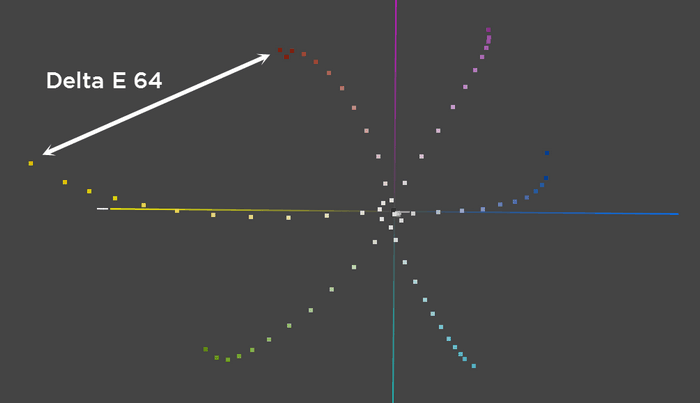
In other cards (here you can see a standard IT8), there often is a big gap between the primary colors.
Uniformity of distribution of SuperChroma’s patches
This system allows color accuracy not to be lower in some areas, but is the same in ALL color space. Constant distribution = constant quality. Producing and optimizing 999 color patches has required dozens and dozens of hours of meticulous work, as many patches have been manually optimized one by one.
In the black zone, for example, other charts concentrate many patches because they are built on gradient scales, and these converge on black (and white), producing excessive density of patches in that zone, which then does not result in better accuracy of these tones. In HR1 SuperChroma these patches have been manually optimized.
Comparison between the black patches of the HR1 and its best competitor. It can be seen how in HR1 they are uniformly distributed and in the other there are areas with too much concentration of patches (redundant samples).
Industry’s highest dynamic range
Thanks to UltraChrome ink printing, the dynamic range is the highest in the industry, surpassing chemical paper and -by far- matt printing.
The greyscale
How well the greyscale looks is an important aspect in these charts, because the neutrality of the greys is a very visible aspect.
Most charts contain only one -more or less- detailed greyscale. Is it enough to achieve the result? Not as much as it looks. Having a printed reference of how neutral greys should look like is fine, but it doesn’t solve the problem (make the camera’s greys look perfect), because what is mathematically needed to create the camera profile is not a perfect reference, but a «mesh» of several that allow the software to find out where the camera is on the color map and how to get it to the center, the absolute and pure scale.
The HR-1 offers the most detailed grey range available: a 3 x 3-patch matrix with a «honeycomb» structure that leaves a uniformly distributed mesh in 30 different brightness levels. This allows the profiling program to generate the most accurate gray correction ever seen.
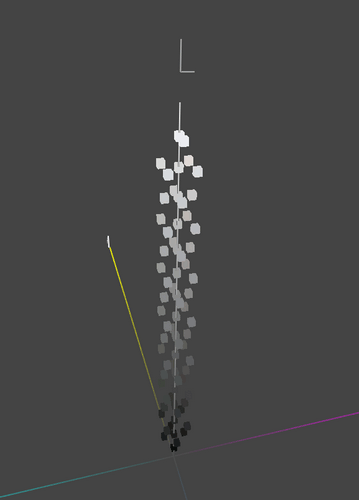
The greyscale seen in 3D in the CIE Lab map.
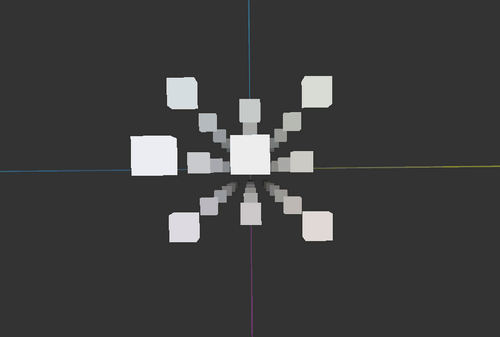
Top view of the grayscale mesh.
Skin tones
A good chart could not be such without a detailed sample of skin tones. The HR-1 has the most complete collection of skins to date. The sample book is based on actual measurements taken at 5 different points on 6 people of different skin colours, from black to white.
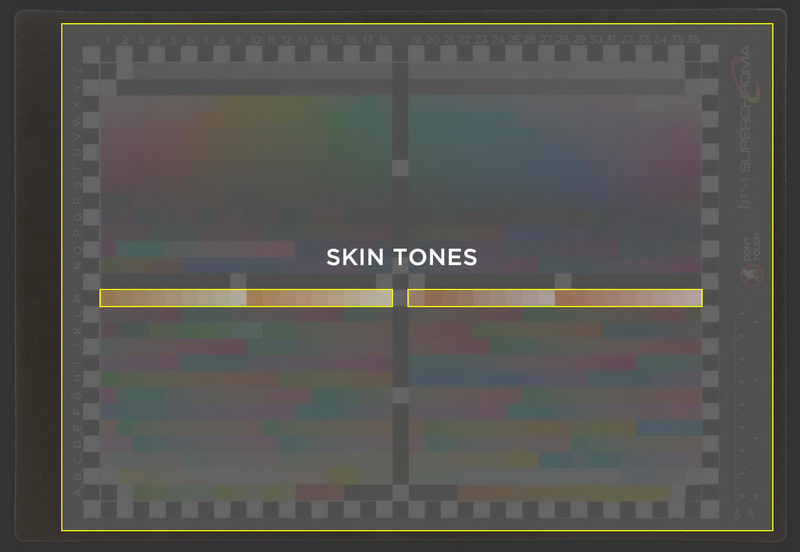
These actual samples are very valuable information, but they are not representative of the bulk of the population, so we studied them on the 3D Lab color map and optimized them to produce a mesh with uniformly distributed samples that includes all of them. Again, the HR-1 offers something completely new in the industry.
Small batches
HR-1s are manufactured in very small batches of about 50 units. This ensures that they are all extremely equal to each other, as the deviation the plotter undergoes from the moment the plotter starts printing until it finishes is minimal and indistinguishable to the eye.
For example: in the small batches that are made, it is guaranteed that from the first to the last there is no greater variation of deltaE 1.5, which guarantees an average deviation from the reference file of less than deltaE 1.
Lab and spectral reference file
Of course, since HR-1 is oriented to offer the maximum fidelity at any cost, one cannot rely on creating a «standard» and then pretend that all the cards are the same (as happens with other cards that do not have their own reference file), since this is materially impossible. That’s why they keep a reference file for each printed batch. The reference files offer a smaller deviation to Delta E 1 with respect to each card, which offers much greater fidelity than, for example, the typical standard IT8, whose deviation is around Delta E 3-5.
Custom reference file on request
On request an individual chart can be measured for extraordinarily high accuracy, with a Delta E 0.1.
Precise lighting control
A capture of the card that is not evenly lit can ruin the resulting profile. For this purpose, the HR-1 has white and black perimeter patches that allow to visually (and numerically if any software makes use of them) check for any uneven illumination as well as color balance.
Perimetral patches are placed not only around the chart also inside it, something unique in the industry. This allows you to check the reflections not only around the chart, but also within the chart.
Reflection control chart
For maximum quality, the HR-1 comes standard with an all-black gloss control chart of the same size as the chart itself. This should be used before the card is captured to check that there are no reflections and, if necessary, to remove them before the final capture.
Rigid base
All SuperChroma are mounted on a black rigid base. The standard material is a PVC sheet with a rough finish of 3mm that gives it great rigidity and lightness. The sides are wide enough to be held with photographic studio tweezers without the danger of damaging the letter itself. In addition, they have been cut with rounded edges by machines that do not require human intervention, which guarantees a very precise cut.
However, in middle 2021 we added a new material that provides some advantages. The new DiBond® material is a ‘sandwich’ of two aluminum layers and a composite material. This makes a very sturdy material with much more rigidness than PVC and also extra weight. The other advantage is that there’s no need for a special black back print for the reflections, as one side of the DiBond is already glossy black, and it’s much less prone to small scratches than photographic paper. It’s highly recommended, and will be the standard (and only) option very soon.
Package contents
All cards are handmade. All the process, except the cutting of the support, is 100% handmade. We take extreme care in each one of them, and once finished, they all pass a meticulous visual examination to ensure they are perfect.
Each one includes:
- The color chart, with the reference file to choose from (averaged or custom read).
- The reflection control chart.
- The PVC base with both cards stuck on both sides and small silicone foots in all 8 corners.
- Detailed instruction manual.
- USB memory with reference files, reference images and software.
- Hard case made of 100% recycled materials.
ORDER YOUR SUPERCHROMA
Price with averaged reference file is 349€; with custom made reference file costs 499€.
NEED A PROFILING SERVICE?
Although profiles can be created with Lumariver, BasICColor Input 5 and ProfileMaker, we can create that profile for you. Also, the first 3 profiles are totally free for SuperChroma customers.
DOWNLOAD PAGE

